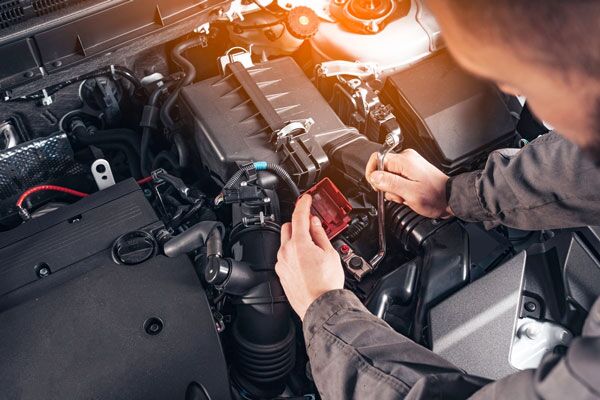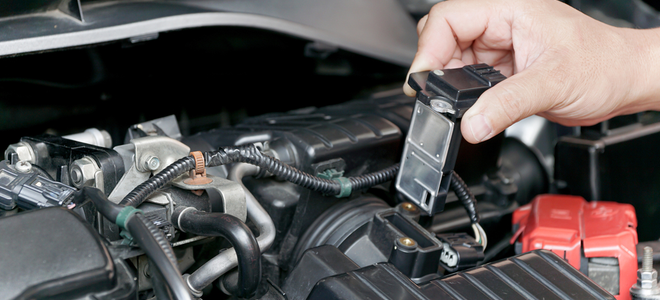Modern engines rely on the Mass Air Flow (MAF) sensor as a vital component to achieve correct air-fuel mixes for their best performance levels. Driving enthusiasts investigate ways to edit the component as a means to elevate horsepower, quicken throttle responsiveness, and work around engine-related restrictions. Car enthusiasts experiment with MAF sensor manipulation through sensor modifications, including resistor installation, relocating the sensor, and tossing it out altogether.
Learn how to trick amass air flow sensors & modifications using this strategy can temporarily improve engine performance yet expose vehicles to compromised fuel economy and harsh engine operation while increasing the likelihood of damage. An informed decision requires a basic understanding of your MAF sensor, its possible modifications, and its implications because you plan to modify it.
Things You Should Know
- You should avoid attempting to trick your MAF sensor because this practice reduces vehicle efficiency while causing erratic acceleration.
- The MAF sensor tracks engine airflow, while a malfunctioning unit results in reduced gas economy, together with delayed acceleration response times.
- The MAF cleaning process requires you to remove the sensor and spray it with MAF cleaner. and let it dry for one hour before reinstalling it.
- There is no better fix for an MAF sensor problem than to install a new one.
Is Removing The Filter Screen Worth It?
The MAF filter screen acts as a fine mesh that smooths out incoming air before it reaches the sensor, ensuring accurate readings. However, some performance enthusiasts believe that removing or replacing the MAF screen can increase airflow and improve throttle response. While this might sound like a quick horsepower hack, it can sometimes lead to turbulent airflow, causing inaccurate sensor readings and potential ECU miscalculations. If you’re considering this mod, it’s crucial to weigh the benefits against possible drawbacks, such as rough idling, poor fuel economy, or even check engine lights. Instead, a high-performance aftermarket MAF sensor might be a smarter, safer alternative for boosting airflow without compromising engine efficiency.
Cold Air Intake And Improved Efficiency!
Your vehicle’s performance will increase dramatically after installing a cold air intake (CAI) which stands as an easy modification with high performance benefits. A cold air intake draws in denser cooler air which makes your engine burn fuel more efficiently, thus resulting in improved horsepower and response time and enhanced fuel economy. Your engine performance upgrades when you install a cold air intake which also gives your car a powerful engine sound for the same responsive on-road experience.
The key to maximizing cold air intake (CAI) benefits depends on proper installation, which includes optimal positioning within a low-airflow area above water and debris contamination zones. Also, it helps to understand you that how to trick a mass air flow sensor. Performance enthusiasts should consider a cold air intake as a valuable addition to their driving needs if they want either boosted power or a tidier engine compartment.

The Future Of Automotive Acceleration
By using powerful electromagnets, vehicles could theoretically reduce friction, improve efficiency, and achieve faster acceleration without relying solely on traditional engines. Some futuristic concepts, like maglev (magnetic levitation) technology, have already proven successful in high-speed trains. While applying this directly to automobiles remains a challenge due to infrastructure limitations, ongoing research into magnetic drive systems could pave the way for more efficient, frictionless transportation in the future.
Benefits Of A Large MAF Sensor Housing
Enlarging the MAF sensor housing allows more air to flow into the engine, potentially boosting horsepower and throttle response. This modification is popular among performance enthusiasts, especially those with turbocharged or high-performance engines, as it helps prevent the MAF sensor from maxing out at high airflow levels. However, without proper ECU tuning, this change can lead to incorrect air-fuel ratios, poor drivability, or even engine damage. If done right, a larger MAF housing can complement other airflow upgrades for better overall performance.
What Happens When You Block the MAF Sensor?
Some tuners attempt to manipulate MAF sensor readings by partially obstructing airflow using mesh, tape, or other objects. This can trick the ECU into adjusting the air-fuel mixture, potentially leading to richer or leaner combustion. While this might temporarily alter performance, it often results in erratic throttle response, poor fuel efficiency, and long-term engine issues. Instead of blocking airflow, proper ECU tuning or upgrading intake components is a safer and more effective approach.
Common Issues And Drawbacks
A malfunctioning MAF sensor causes numerous issues with your engine by creating bad acceleration and rough idle conditions consuming more fuel, and possibly resulting in stalling. Continuous exposure to dust and particles will contaminate the sensor until it produces faulty measurements that modify the air-fuel ratios, thus activating check engine signals and elevating emission levels. When an MAF sensor begins to fail severely, it will activate limp mode to restrict engine power, making your car unable to reach its maximum performance and protecting your vehicle from additional damage. The continuity of your car depends on proper maintenance of these components because failures from neglect will induce engine misfires which create lasting damage to your vehicle.
Frequently Asked Questions
What Does A MAF Sensor Do?
It measures the air entering the engine to help adjust the fuel-air mixture for optimal performance.
How Can I Improve Engine Performance Safely?
Consider cold air intake systems, ECU tuning, or replacing a faulty MAF sensor for reliable gains.
Should I Replace Or Trick My MAF Sensor?
Always replace a faulty MAF sensor instead of tricking it for better performance and engine health.
Conclusion
Tricking an MAF sensor might offer short-term gains, but the long-term risks—poor fuel economy, rough performance, and potential engine damage—outweigh the benefits. After thoroughly participation you will better understand that how to trick a mass air flow sensor. Instead, opt for proper tuning, performance upgrades, or ECU recalibration for safe and reliable results. Smart modifications keep your engine running strong without compromising efficiency or longevity.



